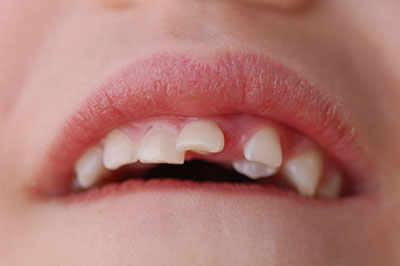Dallas Center for Oral & Maxillofacial Surgery
Impacted Canines

Impaction is not just restricted to wisdom teeth.
The next most common tooth to get impacted is the maxillary canine.
Wisdom teeth do not serve an active purpose, so an impacted wisdom tooth can be removed without any trouble. On the contrary, canines are vital for chewing and maintaining the regular bite force, making its impaction a far greater issue.
Causes Of Impacted Canines
There are two major causes of canine impaction:
1. Tooth Overcrowding
Badly aligned front teeth can often result in overcrowding inside your mouth. In this case, teeth tend to fight for space, which may leave little room for canines to function or even erupt properly.
2. Unusual Growths
At times, there may be unusual growth on the soft tissue of your gums. This can hinder the eruption of canines, which can eventually result in impaction.
Symptoms Of Impacted Canines
Here are some signs of canine impaction:
| • | Noticeable gap where tooth fails to emerge |
| • | Headache or jaw ache for a long time period |
| • | Swelling or redness in the gums near the impacted tooth |
| • | Bad breath |
| • | Tenderness or pain of the jaw, gums, or mouth |
| • | Bad taste inside the mouth |
In some cases, a patient may find it hard to open and close their jaw. A rare scenario is the development of lymph nodes in the neck.
Treatment For Impacted Canines
When a child has an impacted canine, simply removing the baby tooth creates the space required for the permanent canine to grow properly in position. If impaction is due to overcrowding, the dentist may consider extracting other neighboring teeth to make room for the canines.
Younger patients may also have to get an orthodontic bracket in place to allow space on the dental arch for the impacted canine. On the other hand, surgery may be required to treat impacted canines in adults.
– Impaction Near the Palate
If the impacted canine is near the palate, your dentist can cure it in two ways depending on the position of the tooth. The dentist may perform surgery to expose your tooth in order to enable it to erupt by itself. This will allow the tooth to emerge until it is at the level of the surrounding teeth. After the surgery, your entire set of teeth would be aligned using braces.
The second method is to expose the tooth and fit an orthodontic bracket either during the surgery or soon afterwards in order to align it with the neighboring teeth.
– Impaction Towards the Face
In case canine impaction is close to the facial or outer side of the upper jaw, there are three treatment options that your dentist may choose from.
The first option involves baring the tooth and repositioning the gums to make a portion of the crown exposed. An orthodontic bracket would then be fixed to the tooth in order to move it towards its normal position.
The second way is to expose the tooth, fix a bracket to it, and replace the gums back to their natural position. Only the bracket would be noticeable through the gums as the tooth gets repositioned.
The third option involves forming a window through the gums to the tooth’s surface. An orthodontic bracket would then be fixed to the tooth to help it move towards its original position. After this, your dentist may do gum grafting at the base of the tooth to repair the removed gum tissue.
You may experience some discomfort after the surgery when the anesthesia wears off. You may take pain relievers to minimize any pain. If you suspect an impacted canine inside your mouth, schedule an appointment with us at Dallas Center for Oral & Maxillofacial Surgery by calling us at 972-733-0414 today.

Patient Feedback
Read More Feedback >
